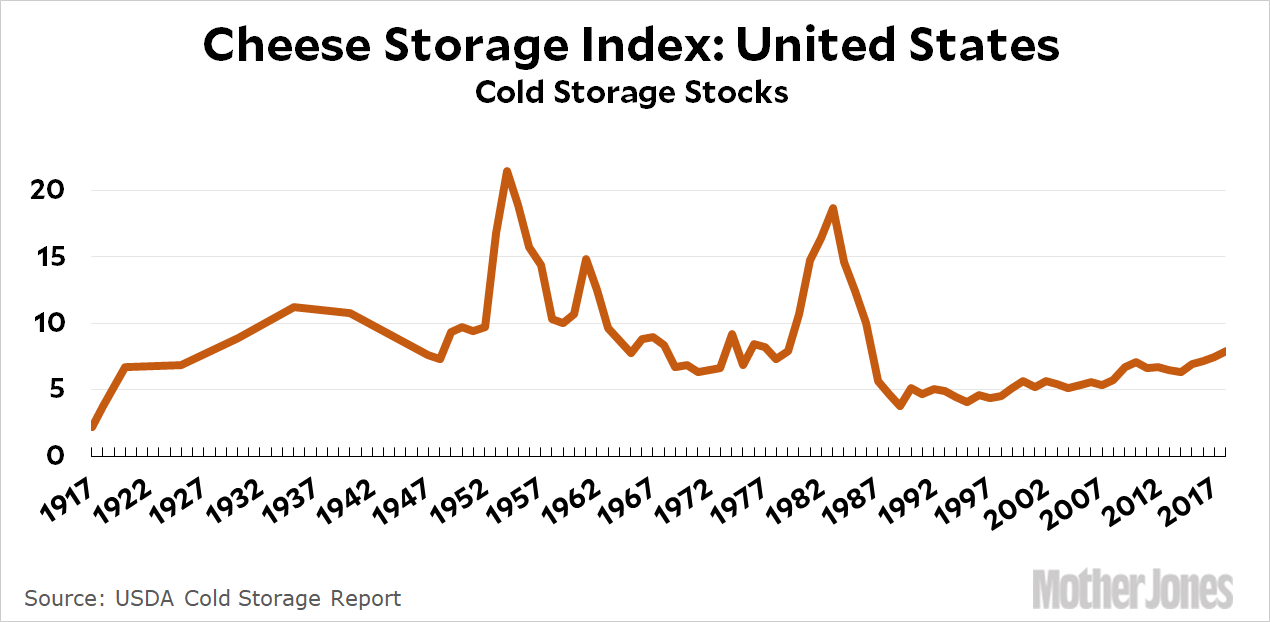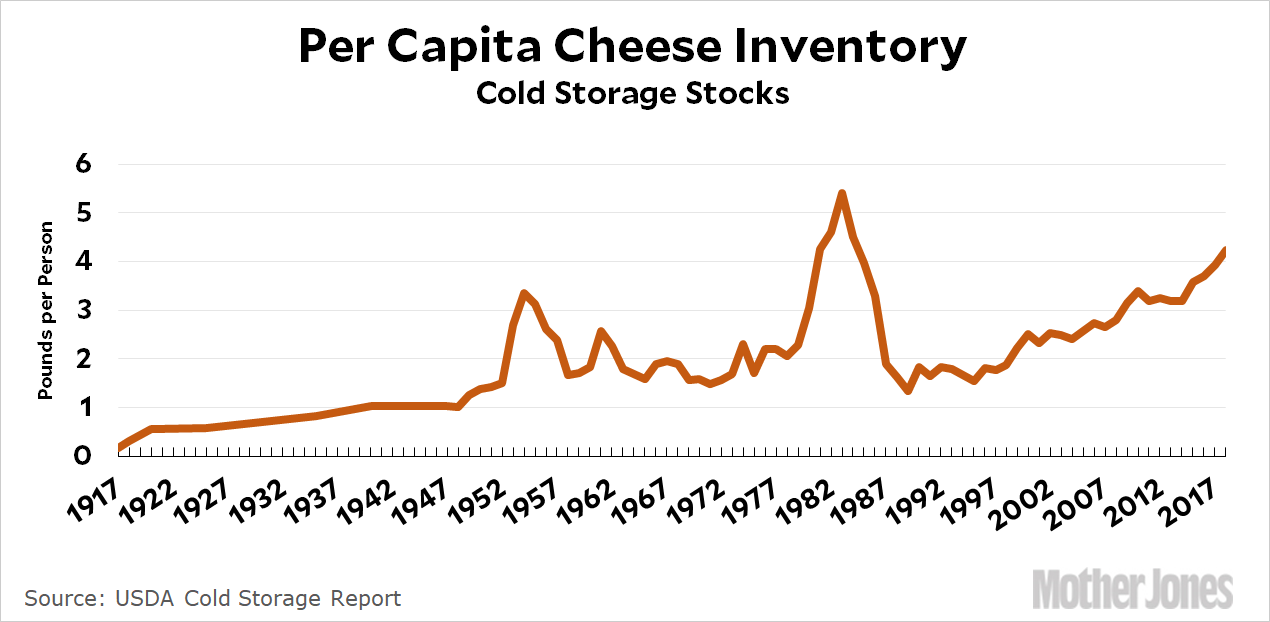For some reason, everybody is reporting today about our record cheese stocks. Apparently our cheesemakers had 1.39 billion pounds of cheese in cold storage at the end of May, the largest amount ever.
But is this really a record? I decided to create the Cheese Storage Index: United States (CSI: US™) that adjusted the tonnage of cheese for the size of GDP. Once you do that, our current cheese inventory doesn’t look quite so spectacular:

The real high points were the Korean War era and then again during the early Reagan era. The Reagan cheese became famous as “government cheese,” which caused widespread criticism when the public discovered that huge amounts of cheese were rotting in vaults at the same time that the food stamp program had been cut during a severe recession. In 1981 Reagan signed a bill to distribute free cheese to nonprofits, and eventually the government gave away 300 million pounds of cheese. This ended the massive cheese inventory of the early 80s.
As for the Korean War, I’m not sure what the deal was there. Leftovers from the Marshall Plan? Several years of really good weather? Cheesemakers hoping to make a killing if the war continued and soldiers needed more fondue?
Anyway, today’s cheese mountain is, relatively speaking, a minor foothill. If we ever declare war on Denmark, we’ll wish we had more.
UPDATE: On Twitter, David Fickling writes: “I’m a little alarmed by the longer-term implications of @kdrum suggestion here that cheese consumption should grow in line with GDP rather than population.”
That is alarming, isn’t it? Sadly, using a per-capita measure sort of ruins my joke. Nonetheless, here it is:

The funny thing is that it doesn’t change the story all that much. You still have two big spikes during the Korean War and the early Reagan years, though they’re a bit smaller than in the original chart. And you have a steady increase since 1990, this time a little bigger than in the original chart. On a per-capita basis, our cheese stocks are now bigger than the Korean War spike, and three-quarters the size of the Reagan spike instead of less than half as big. Still not a crisis, perhaps, but definitely a trend moving in the wrong direction. I blame Canada.

















